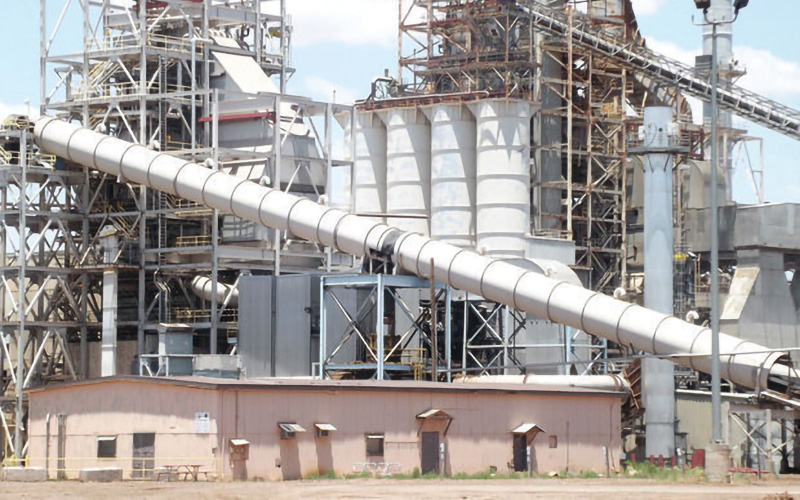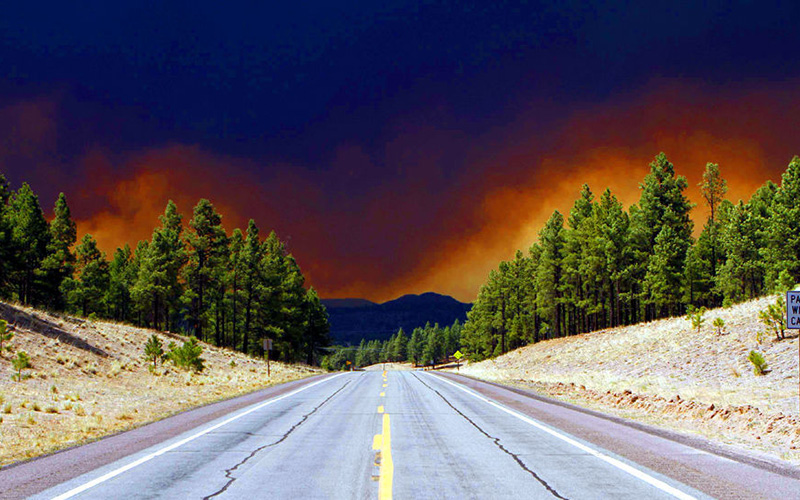The Arizona Corporation Commission this week agreed to require the state’s utilities to buy or produce 90 megawatts of energy annually from biomass — saving the forest restoration industry from collapse.
The Corporation Commission on a 4-1 vote ordered the reluctant staff to come up with a proposed set of rules to create a market for the 1.5 million tons of branches, brush and debris created by thinning 50,000 acres of overgrown forest annually.
“We were in a desperate situation,” said Gila County Supervisor Tommie Martin, a leading member of the stakeholders group for the Four Forest Restoration Initiative (4FRI). “This is critical.”
The ACC staff had drafted a report questioning the value of extending even the current mandates to buy 28 megawatts of power, much less expanding the requirement to 90 megawatts.
But Commissioner Andy Tobin led the push for the full 90 megawatt requirement, which would create the market needed to jump-start the moribund 4FRI effort. It could also boost the average homeowner’s electric bill by $1 to $4 a month, based on an earlier, still debated study by Arizona Public Service (APS).
“This is huge, absolutely huge,” said Martin of the provisional commission support for expanding the market for biomass. “It turns the biomass into a product instead of a problem. If we can’t figure out how to let the industry deal with these attendant issues, we’re not ever going to get this forest cleaned out — period.”
Novo Power President Brad Worsley said only a Corporation Commission mandate and long-term contracts from the Forest Service will make it possible to create the biomass power generation plants needed to sustain forest restoration. Novo Power operates a 28 megawatt biomass power plant in Snowflake, the only one in Arizona. APS currently has a four-year contract to buy power from the plant, which has sustained the forest restoration efforts in the White Mountains.
“I’m grateful for what happened Monday,” said Worsley. “But I’m not breathing a lot easier yet. It’s not done until it’s done — and it’s not done yet.”
The commission must still adopt a final rule, with many key details still unresolved.
Forest restoration advocates showed up in force this week at a commission hearing, prompting the commissioners to essentially overrule a staff report. The staff had concluded the commission should focus on keeping electric rates as low as possible instead of shifting the cost of forest restoration onto electricity users.
However, forest advocates pointed out that creating a market for millions of tons of biomass would benefit the entire state. Large-scale thinning would likely increase runoff from millions of acres of watershed into the Valley, in a state with a worsening water shortage. Saving the forest restoration efforts would also potentially save billions in wildfire suppression costs and billions in property damage. It will also save lives by reducing deaths from air pollution from wildfires, save the lives of firefighters and homeowners from megafires. All the while, the biomass industry will provide jobs in hard-pressed rural industries.
“Commissioner Tobin pointed out that rarely is a political movement pure in its intention and perfect in its answers — but there are very few things we work on at a state or national level more important,” said Worsley.
Martin said APS and other power companies also supported the plan, along with a host of environmental groups, officials from rural counties, logging companies and advocates for economic development.
“We now have an opportunity to see if the market can solve this problem — we didn’t have that before,” said Martin.
The Forest Service has struggled for a decade to find a contractor who could thin the millions of acres of overgrown forests, which have contributed to a massive increase in wildfires. The Paradise fire in California that killed 85 people, consumed 15,000 homes and inflicted $9 billion in damages demonstrating the potential for disaster in a drought-plagued, overgrown forest.
The Forest Service has pioneered how to complete massive environmental analysis, getting hundreds of thousand of acres approved for clearing in a single study. However, one contractor after another has failed to come anywhere near the 50,000-acres-per-year pace envisioned a decade ago. Even at that pace, it would take perhaps 40 years to work through the 2 million acres in need of thinning. Tree densities have increased from maybe 50 per acre to perhaps 800 per acres over much of that area, due to fire suppression, grazing and clear-cut logging.
Given the new streamlined Forest Service system, economics now represents the biggest challenge to 4FRI, the biggest forest restoration effort in the nation’s history. The region now has only a handful of mills that could handle trees in the 12- to 16-inch diameter range. But the much greater challenge lies in getting rid of the thickets of 6- to 8-inch trees, branches from the larger trees and brush.
Every acre thinned produces roughly 50 tons of material — equally divided between logs for the mills and biomass. Contractors’ promises to turn the biomass into jet fuel, compost, soil char or other exotic products have all fallen short — leaving only biomass burning as a market.
Martin said the power companies, loggers, environmentalists, local officials and fire officials made common cause before the commission this week.
“They had a chance to be statesmen, to display the leadership needed to get this over the finish line — to really get a grip on these vulnerable forests.”
She noted that the commission will meet again to adopt a final rule in the next one to three months.
Worsley said only the adoption of such a rule combined with a Forest Service contract guaranteeing a supply of biomass for the next 15 to 20 years will make this possible for companies like his to get the financing needed to build additional biomass power plants.
His company has estimated it would build a 50 megawatt power plant in about 20 months for roughly $100 million.
The APS study estimated a 30 megawatt biomass power plant could cost as much as $500 million.
Still, forest advocates this week celebrated a crucial victory.
Navajo County Supervisor Jason Whiting said, “It would appear the commission now understands how much this matters to Arizona and its citizens. A month ago, this was on its deathbed — but through numerous prayers and efforts from concerned citizens, leaders and elected officials we are now moving in the right direction.”


